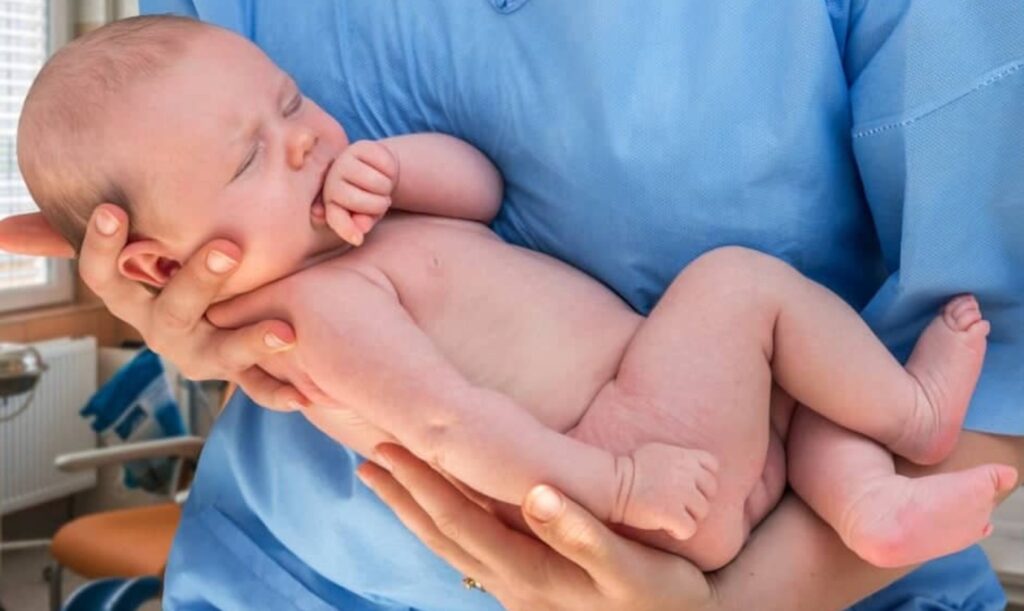Any form of harm an infant sustains before, during, or immediately following birth is referred to as a birth injury. During delivery, many newborns sustain mild injuries that don’t require medical attention and frequently mend on their own in a matter of days or weeks. However, some birth injuries can result in more serious consequences that could leave your child permanently disabled.
The circumstances and conditions that contributed to the birth injury affect its nature and extent of it. Birth injuries can be caused by a variety of factors, including maternal conditions, newborn problems, medical negligence, and other external factors. Parents and the medical staff should look out for several types of birth injuries, as mentioned below.
1. Cerebral Palsy

Cerebral palsy is a disability that results in the brain’s inability to appropriately govern the movement of the body’s muscles. Cerebral palsy is characterized by a lack of motor skill development, frail muscles, and muscle spasms. The medical team’s inadequate birthing methods, insufficient monitoring of the laboring woman, and inability to keep an eye on the fetus’s discomfort can cause extreme hypoxic episodes, which can result in cerebral palsy. If your child has been diagnosed with cerebral palsy, then you might be eligible to file a malpractice case against the hospital that handled the birth. You can visit www.childbirthinjuries.com for more information on filing a malpractice lawsuit. Signs and symptoms of cerebral palsy include:
• delays in achieving developmental milestones
• weakness in arms or legs
• restless, jerky, or awkward movements
• random, uncontrolled movements
• muscle spasms
• hand tremors
2. Facial Palsy

Facial nerve palsy caused by birth trauma is the loss of controllable (voluntary) muscle action in an infant’s face as a result of pressure on the facial nerve soon before or at the moment of birth.
Facial nerve injury during delivery can occur if an infant’s face is put under too much pressure. Moreover, when the baby is removed with forceps or a vacuum, facial paralysis is more likely to occur. The affected side of the baby’s face can be completely immobile, including the ability to close one eye. Signs and symptoms of facial palsy include:
• face drooping and the inability to make facial gestures like smiling or closing your eyes
drooling
• on the affected side, pain in the jaw area, in the ear, or behind the ear
• affected side’s heightened sensitivity to sound
• headache
• loss of taste
3. Cephalohematoma

Cephalohematoma typically occurs after a challenging vaginal delivery, causing blood to collect behind the newborn’s scalp. Pressure during delivery, including the use of vacuum extractors, can cause the blood vessels in the scalp to break. As a result, a raised bump on your child’s head may be visible several hours after birth. It hardly ever requires any serious treatment, but it might make infections, anemia, and jaundice more likely. The following factors raise the possibility of a newborn developing cephalohematoma:
• employing forceps or vacuum extraction to assist with delivery
• birth pain alleviation using an epidural
• larger-than-average fetus weighing more than 8 pounds 13 ounces (fetal macrosomia)
• multiple babies (twins, triplets, or more)
• protracted and challenging vaginal birth
4. Erb’s Palsy

Erb’s palsy is damage to the brachial plexus nerves that causes weakness or loss of muscle function in the arm and shoulder. It usually results from a physical injury sustained during childbirth or from a forceful downward movement of the upper arm or shoulder that harms the brachial plexus. The brachial plexus is a network of nerves located close to the neck and gives movement and sensation to the shoulder, arm, hand, and fingers.
During a challenging birth, the infant’s neck is frequently extended to the side, and the shoulder is compressed downward, which might result in Erb’s palsy. Moreover, Erb’s palsy may happen as a result of poorly controlled gestational diabetes or maternal diabetes.
The type of damage to the brachial plexus nerve determines the specific symptoms of Erb’s palsy. Erb’s palsy symptoms include:
• loss of feeling in one arm
• one arm is paralyzed completely or partially
• one arm is weakened
• tingling in one arm
• limited arm movement
5. Perinatal Asphyxia

Lack of oxygen and blood flow to the brain is referred to as asphyxia. When a baby’s brain and other organs do not receive enough oxygen and nutrients before, during, or immediately after birth, it leads to perinatal asphyxia.
Perinatal asphyxia can occur without anyone’s knowledge, but some signs and symptoms of perinatal asphyxia to look out for are:
• not breathing or labored breathing
• bluish, grey, or lighter-than-normal skin tone
• slow heart rate
• weak reflexes
• blood acid levels are too high (acidosis)
• meconium-stained amniotic fluid (first stool)
• seizures
Causes:
• before or during labor, the mother’s blood oxygen levels were too low
• placenta blocking the baby’s windpipe
• difficult labor
• mothers with high or low blood pressure
• the baby’s airway is not properly established
• the infant’s airway is obstructed
• the blood cells of infants are unable to carry adequate oxygen (anemia)
6. Kernicterus /Jaundice

Jaundice is brought on by an excess accumulation of bilirubin in the blood. Red blood cells, which carry oxygen throughout the body, are broken down to generate bilirubin, a yellow material. Newborns typically develop jaundice because their blood contains a large number of red blood cells that are constantly being broken down and replaced. A baby’s liver becomes more efficient at processing bilirubin by the time they are about two weeks old, so jaundice frequently resolves by this time without any negative effects. Signs and symptoms of jaundice in newborns:
• baby’s skin is slightly yellow
• yellowing inside the whites of the eyes
• yellowing inside the mouth
• yellowing on the soles of the feet
• yellowing on the palms and hands
• sleepiness all the time
• not feeding properly
• yellowness in the urine
• pale stool
Conclusion
If your child suffers from a birth injury, you will need to make treatment choices from the moment your child is born. Treatments can begin immediately if your child’s injury is diagnosed early. Early interventions are essential for children to gain as much as possible from treatments such as surgery, medicine, therapy, and emotional, behavioral, and educational interventions.







